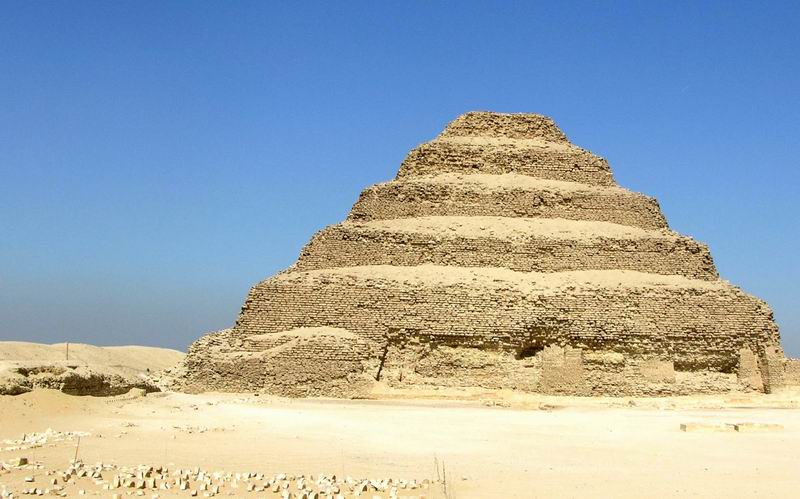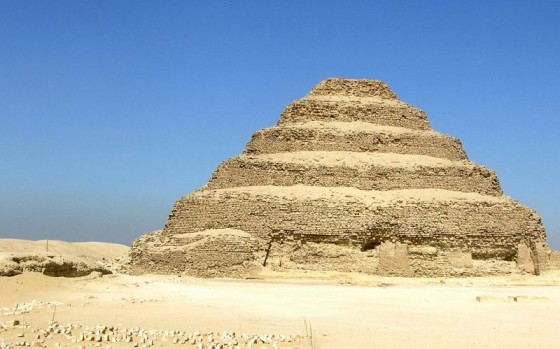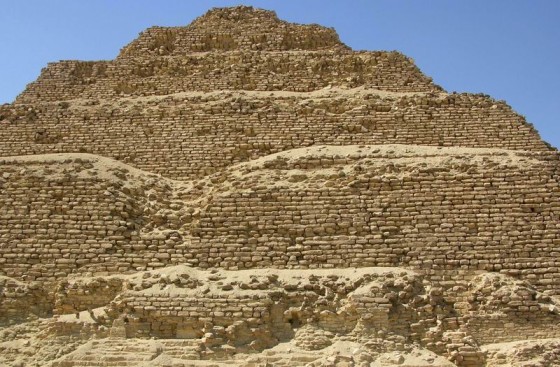
Egypt is the land of many necropolises that refer to a big burial ground around the ancient civilization ruins. In fact, the term itself means the city of the dead. If one has to consider Egypt, the pyramids there generally form the burial structures and one such magnificent one is the Step Pyramid of Djoser residing today in the archaeological site of Saqqara that is simply called the Saqqara necropolis. Also called as the step pyramid, this architectural feat of the 27 century B.C. is accessible from the Memphis city. As the name suggest, this pyramid is the burial tomb of the pharaoh named Djoser, which was constructed by Imhotep, his vizier.
Today, the Saqqara necropolis is a vast mortuary site edges by an extensive courtyard as well as many ceremonial structures. However, the main attraction of the tourists here is none other than the Step Pyramid of Djoser. Why? The reason is not only its architectural details that boast six mastabas piled upon one another in a size reducing pattern, but it is also the fact that this one was the first pyramid to be built on the land of Egypt! How exciting!

Formerly 62 metres in height, this white limestone pyramid is considered as the most fundamental large-scale built up in stone despite the fact that the nearby Gisr el-mudir was erected much earlier than this one. When the Step Pyramid of Djoser was built, it did not only play a role of a grave, but also catered in offering a successful life after death to the buried Djoser inside so that he can come back to life eternally. Further, it is also assumed that this pyramid acted as a crown and also made the pharaoh’s ascension possible with the North Star.
Talking about the construction, the pyramid has six steps each one been built in six stages. The foundation was laid and a square mastaba was first built, which was then gradually enlarged making its erection divided into two stages: four-stepped structure phase and six-stepped structure phase. The most surprising fact here is the shape of the mastaba in square as no Egyptian mastaba is ever found as a square. Further, while the mastaba boasted horizontal courses, the pyramid featured accrual layers bending inwards. Below is a labyrinth of burrowed galleries as well as chambers of 6 km, which connect to a deep central shaft where the king was buried with the required goods, offerings, as well as his family members. The limestone passage sides replicated reed matting, while the wall panels were adorned in low reliefs showing the king’s attendance in the Heb-sed festival – – a vital custom followed after 30 years of rule by every Egyptian king. Further in the east, the horizontal tunnels supported 11 more shafts.
The burial chamber is actually a crypt of four granite courses along with an opening that closed a lofty block. However, no body was seen, which was certainly attributed to robbing. But, even today, you can spot some probing limestone blocks in five stars signifying that the king used to connect his identity with the permanent North Star.

On the northern face, relics of a small room Serab exists where a sloping wall has two large holes through which one can pee into the inside statue of Djoser. What you see today is a replica, as the real one is at the Egyptian Museum in Cairo). In the past, the ancient Egyptians used to offer via these holes to their deified pharaoh.
In the center of the step pyramid of Djoser, a huge court bears the curved stones that reveal about the Heb-sed festival. There is also something called as The South Tomb that is assumed to be the pharaoh’s residence in his afterlife, which is accessible through a tunnel-like passage boasting steps descending down up to 30 m and ending in a pink granite burial chamber. However, the steps go beyond this up to a gallery in the west that mimics those chambers in blue residing below the step pyramid.
Besides the pyramid flanked by a big funerary complex, there is a hypostyle hall where one wall reveals the frieze of cobras, the snake revered as a goddess who is regarded as the symbol of royalty.
Entrance fee
£e20; £e5 for camera, £e25 for video recorder.